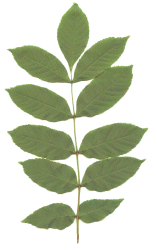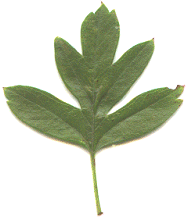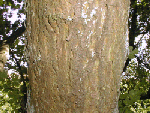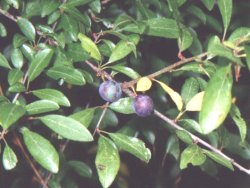|
ASH One of the most common trees in Furzefield wood, the ash can grow up to 40m in height. The leaf is easy to spot along with the pale grey bark of the bole. The trunk (bole) is quite smooth when the tree is young but becomes 'fissured' as the tree gets older as on the left. The ash trunks in the wood are long and straight. |
 |
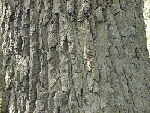 |
OAK We all know this one. This is my second variety of large stands (40m) in the wood. I believe the Furzefield oaks are Common Oak although they are similar to the Sessile Oak and may be hybrids of the two. These oaks seem to be very long in the trunk. The bark is more deeply fissured than the ash and much darker in colour. In reality the difference between ash and oak bark is more marked than in my images. |
 |
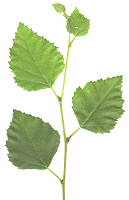 |
SILVER BIRCH Silvery or white bark with deep splits in older trees, the silver birch grows up to 30m high. There are a few in the wood. Yellow catkins in the spring. Similar species are the Downy and Paper-bark birches not found in the wood which also have this characteristic light bark. |
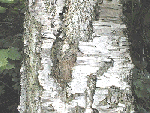 |
HAZEL Not so much a tree more a large bush, the Hazel is the wood which is coppiced to form the multi-stemmed stumps of Furzefield Wood. It's everywhere and can grow up to 12m in height. You will know this tree or bush by its yellow catkins and hazel nuts. Later in the year you will find the nutshells with their contents missing, thanks to the squirrels lying all over the place. |
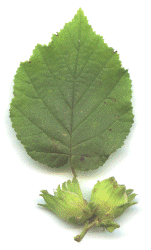 |
|
|
HAWTHORN Another large, prickly bush or tree (up to 15m high) this is common in the wood. The bole seems to split low down giving rise to many low branches. The mostly white (sometimes pink) flowers of the hawthorn come in clusters of and give rise to the red berries, known as 'haws', later in the year. |
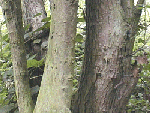 |
|
FIELD MAPLE More of a tree than a bush the field maple is found in a couple of places in the wood. It can grow up to 25m tall. The yellowy-green flowers in spring turn into the horizontal aerodynamic, winged seed pods tinged with orange/pink at the tips. |
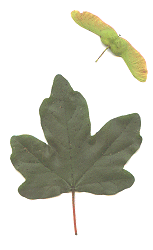 |
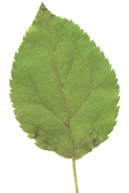 |
CRAB APPLE This one has scaly bark, I found this one, old example of the crab apple in the wood having noticed its white blossom earlier in the spring. Now, in mid-July the first crab apples are already up to 5cm in diameter and a few have already fallen. |
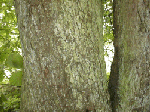 |
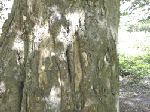 |
HORNBEAM The main characteristics of this tree (up to 30m) are the silvery brown fluted trunk and its fruits/seeds. There is one enormous, good looking, Hornbeam in the wood (left) although there are some scrappy smaller ones on the eastern side. |
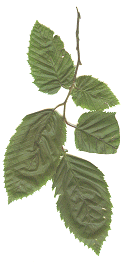 |
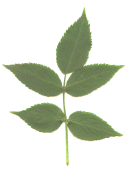 |
ELDER Such a common bush (up to 10m) it hardly needs a mention. Catch the white or creamy blossom in spring and the purplish-black clusters of elder berries on red stalks later in the year. |
|
HOLLY An evergreen shrub or small tree, holly grows up to 12m high. Its leaves are prickly, dark, glossy green on top and pale green underneath. It produces scarlet berries on female trees later in the year. |
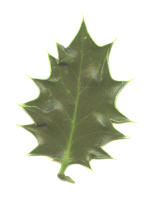 |
|
|
SLOE (BLACKTHORN) A thick, spiny shrub or small tree up that grows up to 6m high. Its abundant white flowers come before its leaves in Spring. Berries are blue-black with bloom on their surface (1-1.5cm dia.). |
|
